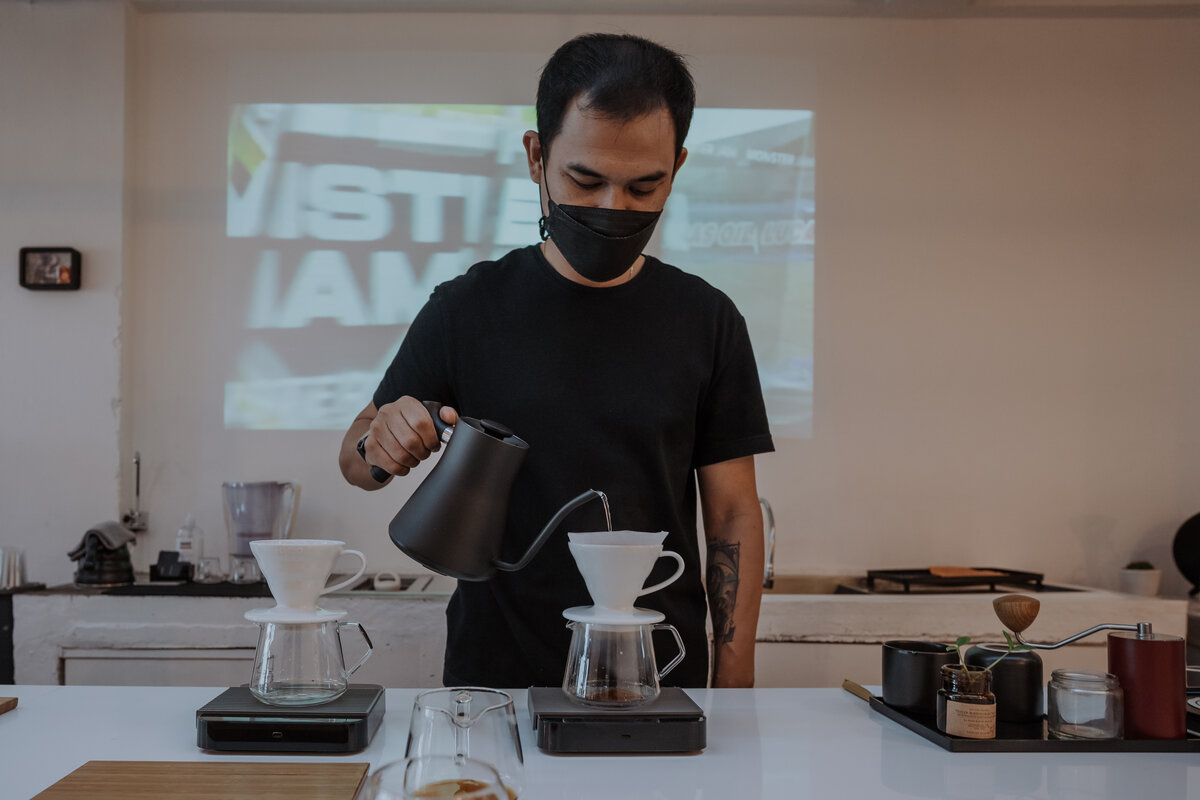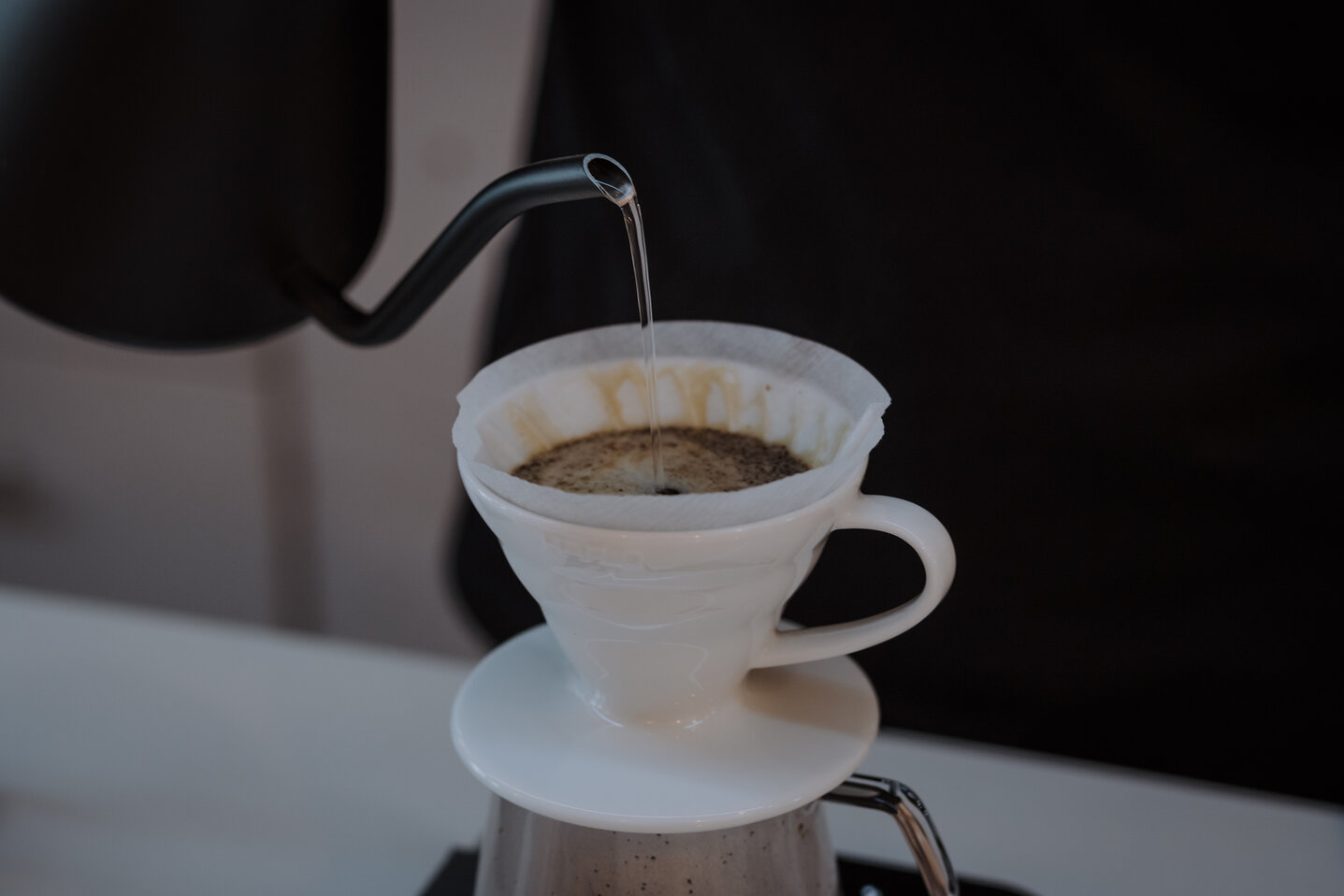The Art of Pouring with a Gooseneck Kettle: Tips and Techniques for Precision Brewing
Coffee enthusiasts know that precision is crucial when it comes to brewing the perfect cup. One of the tools that can make a significant difference in your brewing process is a gooseneck kettle. In this article, I will discuss the benefits of pouring with a gooseneck kettle, spotlight three pour-over pouring practices and provide tips and techniques for precision brewing.

What is a Gooseneck Kettle?
A gooseneck kettle is a specialized type of kettle tailor-made for meticulous pouring. It features a long, thin spout that allows you to control the flow of water more accurately than a standard kettle. This unique design makes it an essential tool for pour-over coffee enthusiasts and baristas alike.
Benefits of Using a Gooseneck Kettle
Enhanced control
The primary benefit of using a gooseneck kettle is the increased control it offers. The narrow spout allows you to pour water at a consistent and controlled pace, ensuring an even extraction of coffee grounds.
Improved flavor
Precision pouring leads to better extraction, which ultimately results in a more flavorful and balanced cup of coffee. With a gooseneck kettle, you can easily saturate all the coffee grounds, avoiding under-extraction or over-extraction.
Brewing consistency
A gooseneck kettle helps you achieve consistent brewing results. By maintaining control over your pouring technique, you can replicate your favorite recipes and enjoy a great cup of coffee every time.
Exploring Different Brewing Methods with a Gooseneck Kettle
Hario V60 or Kalita
Pour-over coffee is the most popular brewing method for gooseneck kettle users. The precision pouring offered by the kettle helps achieve a consistent, flavorful cup of coffee every time.
AeroPress
While not as common, you can use a gooseneck kettle to brew coffee with an AeroPress. The controlled pour can help you achieve a more even saturation of the coffee grounds.
Chemex
Chemex is another popular pour-over method that benefits from the precision pouring of a gooseneck kettle. The larger brewing capacity of a Chemex makes it ideal for serving multiple cups at once.

Pouring Techniques for Pour Over Coffee
The Bloom pour
The “bloom” refers to the process of releasing carbon dioxide from freshly ground coffee. To achieve a proper bloom, start by pouring a small amount of water (about twice the weight of the coffee grounds) in a slow, circular motion. This initiates the blooming, which allows trapped gases to escape and the grounds to expand. After 30-45 seconds, continue pouring in a slow, circular motion, beginning at the center and spiraling outward.
The Spiral pour
After the bloom, use a steady, spiral motion to pour water over the coffee grounds. Start from the center and work your way outwards, then back towards the center again. This technique ensures even saturation and extraction of the coffee grounds.
The Pulse pour
The pulse pour involves pouring water in short, controlled bursts instead of a continuous stream. This technique allows you to maintain a consistent water level throughout the brewing process, leading to more even extraction.
Common Pouring Mistakes to Avoid
- Pouring too quickly: Pouring water too fast can lead to uneven extraction and a less flavorful cup of coffee.
- Pouring too close to the filter: Avoid pouring directly on the filter, as this can cause the coffee grounds to stick to the sides and impact extraction.
- Inconsistent pouring: Maintain a consistent pouring technique throughout the brewing process to ensure even extraction.
Frequently Asked Questions
1. Can I use a gooseneck kettle for tea?
Yes, a gooseneck kettle can be used for tea, especially when brewing quality teas that require precise water temperature and pouring control.
2. Is an electric or stovetop gooseneck kettle better?
Both electric and stovetop gooseneck kettles have their advantages. Electric kettles often come with more advanced features like variable temperature control, while stovetop kettles tend to be more durable and portable.
3. How do I know when the water has reached the right temperature?
If your gooseneck kettle has a built-in thermometer or variable temperature control, it’s easy to monitor the water temperature. If not, you can use a separate thermometer or wait for the water to reach a light simmer (approximately 200°F or 93°C).
4. Can I use a regular kettle instead of a gooseneck kettle?
While it’s possible to use a regular kettle for pour-over coffee, a gooseneck kettle offers greater control and precision, resulting in a better extraction and ultimately better coffee.
5. How often should I clean my gooseneck kettle?
Rinse your gooseneck kettle with water after each use and give it a thorough cleaning with vinegar every few months to remove mineral deposits.
Conclusion
Mastering the art of pouring with a gooseneck kettle can elevate your coffee brewing experience, allowing you to enjoy a more flavorful and consistent cup. By understanding the benefits of using a gooseneck kettle, choosing the right one for your needs, and employing proper pouring techniques, you’ll be well on your way to precision brewing. So, get your hands on a gooseneck kettle and start experimenting with different brewing methods and techniques to find your perfect cup! I summarized the best gooseneck kettles for pour over here.